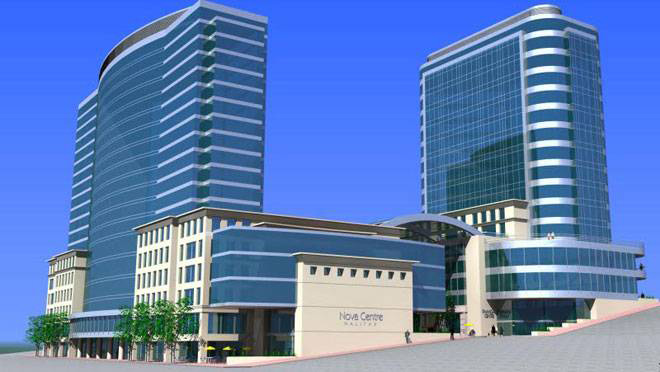The crowds were streaming into Halifax’s Neptune Studio Theatre; the lobby was packed, the house filled to overflowing — standing room only. Another runaway hit at Nova Scotia’s premier theatrical venue? Unfortunately not. Instead it was a veritable orgy of self-congratulations on the part of Halifax’s business and political elite, chuffed to the point of exploding at the announcement that the proposed new Halifax Convention Centre would finally break ground within 30 days towards a completion date of early 2016. The rat-infested, concrete-lined hole in the epicentre of the Halifax development universe will finally rise into the glass and steel edifice henceforth to be known as The Nova Center. Buried, literally, beneath this hotel, residential, commercial, and office-tower complex will be a new convention center for the Halifax Regional Municipality (HRM).
It’s been a long and winding road that lead to this door that started in 2006 when the (then) Conservative government of Nova Scotia commissioned a feasibility study into the creation of a new convention centre for the city. The province owns the present World Trade and Convention Centre which sits on an almost adjacent lot abutting the Metro Centre, a hockey and sports arena. The complex also houses office space and “Ticket Atlantic” which sells, you probably guessed it, tickets for said events.
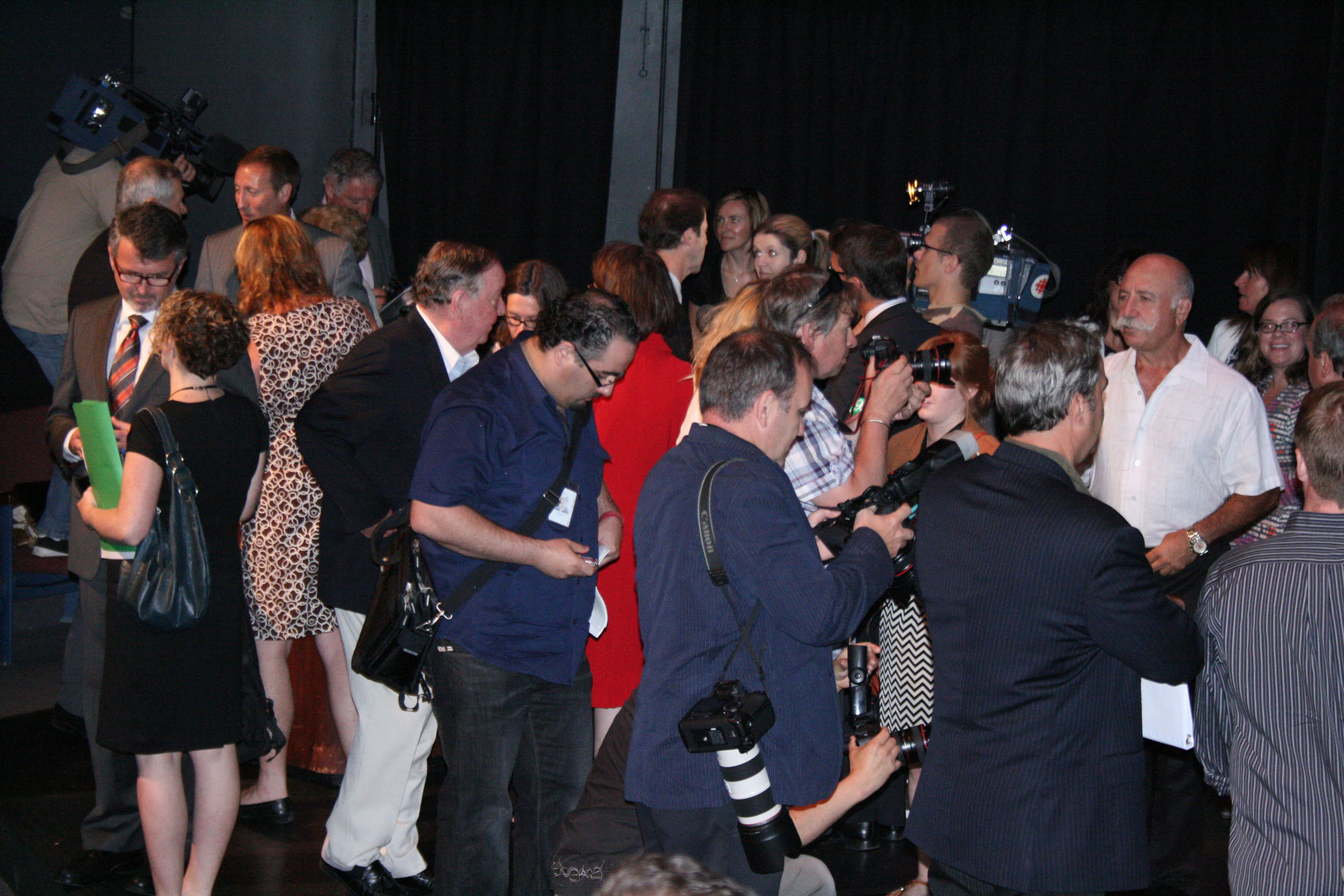
The many twists and turns of this escapade, and the attendant debate and controversy, rival a Wagnerian opera or a Norse saga in complexity and length, and it’s not my intention to recount it here. Interested readers can refer to my study Convention Centre in Nova Scotia: Economic Wellspring or Bottomless Pit? published by the Canadian Centre for Policy Alternatives (CCPA) in December 2010 for a synopsis of the libretto. Suffice it to say that almost every element of the project is in some way problematic.
The location of the building (there are better potential sites), its design (virtually entirely underground), its affect on city view-planes, the ownership, development, and financing of the project [designed to avoid the impression that it is a P3 (public-private-partnership) arrangement, despite an investment of $164.2 million of public money], the lack of concurrent public investment in other sectors that might support the economic and development objectives of the convention centre, the lack of clarity and transparency in the development and design processes and supporting documentation, the very need for the project itself (the current convention centre operates at 42-49 per cent capacity and loses money every year), the economics of the convention centre landscape in North America (where there is an enormous oversupply of convention space, a cutthroat market, and in which virtually all convention centres lose money) — but principally, the dubious business case concocted to support this large investment of public money — $51.4 million by the federal government and $56.4 million each by the province of Nova Scotia and the Halifax Regional Municipality.
Those interested in a detailed examination of this topic should consult my CCPA report, but suffice it to say that reasonable and prudent financial scenarios indicate that the project will lose on the order of $8.7 million/year, or some $218 million over the 25-year term of the project. The province and the municipality are each on the hook for 50 per cent of these loses, i.e., $109 million each.
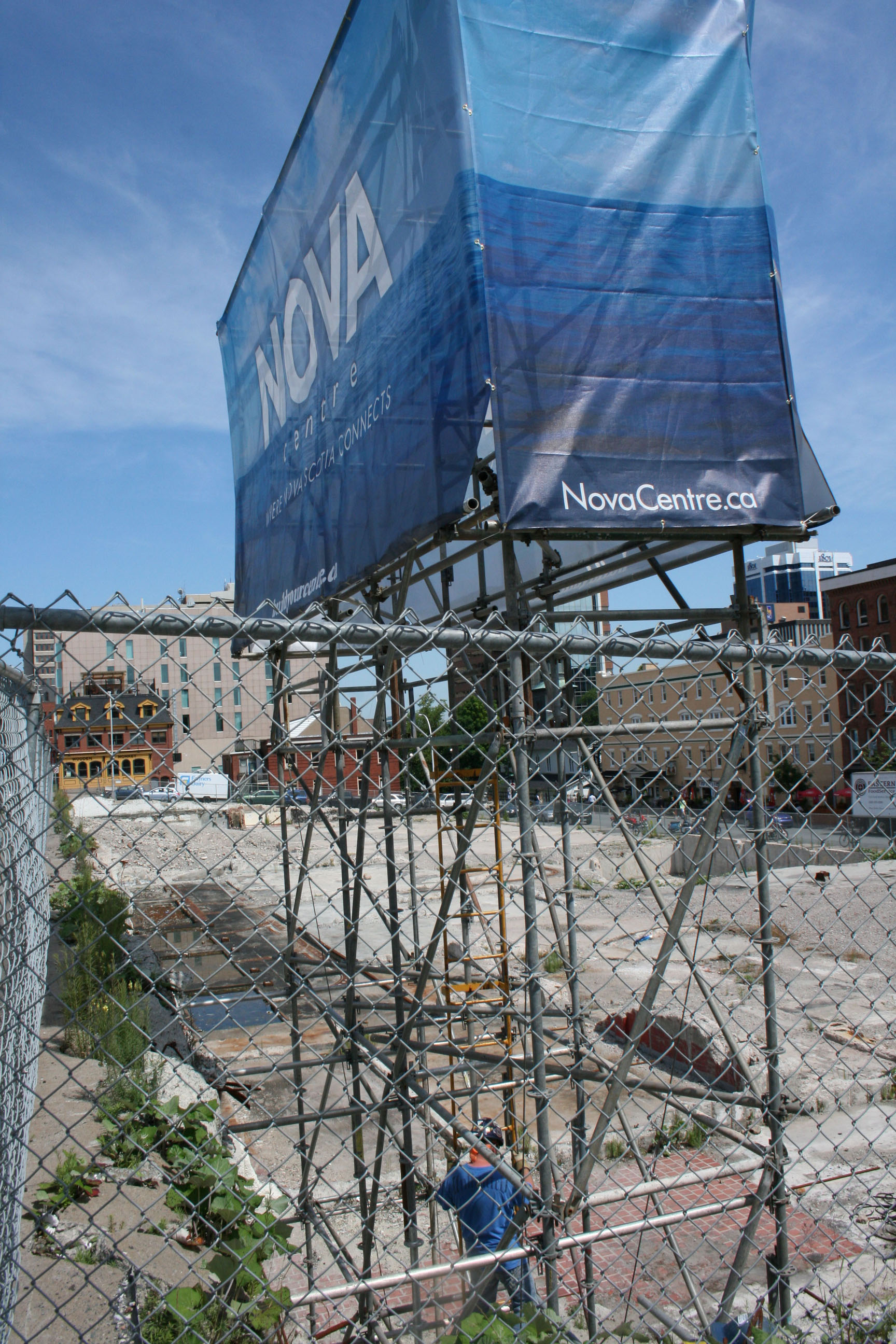
Although the upfront costs of $164.2 million of public money are fixed (developer Joseph Ramia’s Rank Inc. is responsible for any cost overruns) revenues are speculative and conjectural. With the exception of two or three convention centres in large urban markets in the United States, all other convention centres on the continent lose money. They are considered loss leaders. The notion is that spending by delegates (on hotels, food, drink, souvenirs, and cultural activities) will generate sufficient spin-off activity that taxation revenues from these offset the direct losses from convention centre operations. From a provincial vantage, the government hopes it will recoup enough revenues from its share of sales tax, and income tax of those employed by the enterprise and other spin-off businesses, to offset the cost of its investment and share of direct loses. This hope is largely carried aloft by the hot air of dreams, hopes, and aspirations, rather than any hard data on projections in terms of what business the centre may actually be able to generate. Hope, however, springs eternal.
From the vantage of the city, the prospects are much more limited, if more clearly delineated. Property tax is their one real revenue vehicle. Here, again, the convention centre is a loss leader generating perhaps $544,000/year. However, it now it appears that the city (as the tenant of the facility) will actually be required to pay half of this revenue back to itself, this leaving a balance of only $272,000/year. What does offer more substantial potential revenue is property tax on the entire Nova Centre complex (a $500 million project), once estimated at $3.65 million annually, now increased to $3.783 million. Over 25 years this would total $94.58 million. Increases in the HRM hotel levy could bring in an additional $3.75 million over 25 years, i.e., a total of $98.33 million, however, still well short of the $163.4 million the centre will cost and is apt to lose.
A new wrinkle on this funding formula allows the city (which fears cash-flow problems) to defer 25 per cent of its payments ($5.1 million in rent to Rank Inc., which represents the city’s annual investment in the project financed by Ramia’s bank, plus an estimated $1.45 million in operating costs) for the first decade, financed by the province at approximately 4.65 per cent per annum. While this may take the heat off the city in the short term, if it chooses to take advantage of the offer, this will simply increase HRM’s debt at the end of the day by some $760,000.
A further problem for the city [and one which generated a good deal of controversy at the HRM Council meeting on July 10, 2012 when the city voted (17 for; 5 against) to sign the Memorandum of Understanding (MOU) with Rank. Inc.] is that it is obligated — on completion of the new convention centre, presumable in early 2016 — to purchase the old convention centre from the province, if the province has not been able to find another buyer for it by that time. This will cost somewhere in the vicinity of $12-15 million, and renovations to it (if, for example, the city wanted to take it over for its own municipal offices, currently housed in Duke Tower of the Scotia Square complex, or for any other potential client) might cost substantially more than this. These questions, none of which have any current resolution, all lurk beneath the surface like the proverbial iceberg in the path of this titanic development.
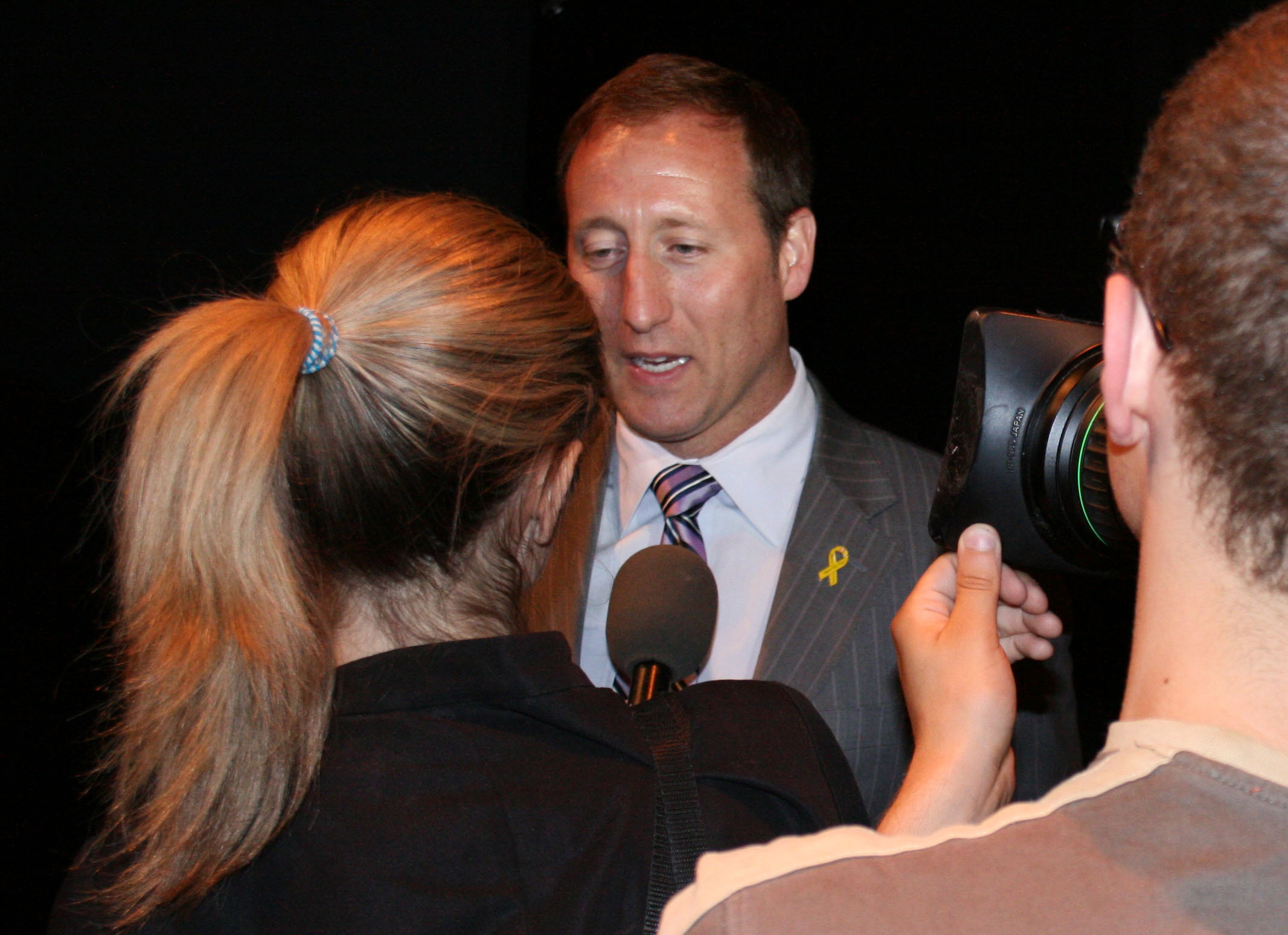
Wild boosterism was much in evidence at the Neptune Studio Theatre. Defence Minister, Peter MacKay (representing the federal government) said that the convention centre, “will really revitalize this city. It will take the “no” out of Nova Scotia. This is going to boost the entire region” and that the project shows “respect for the heritage and character of Nova Scotia.” Perhaps thinking of his own Central Nova riding, MacKay claimed that “The benefits will be abundant and will reach out beyond the city.” Astonishingly given that 50 per cent of Nova Scotians either strongly (31 per cent) or somewhat (19 per cent) disapprove of the convention centre MacKay nonetheless affirmed “The project has received broad support and has unified people. All this indicates that the city is on the move.”
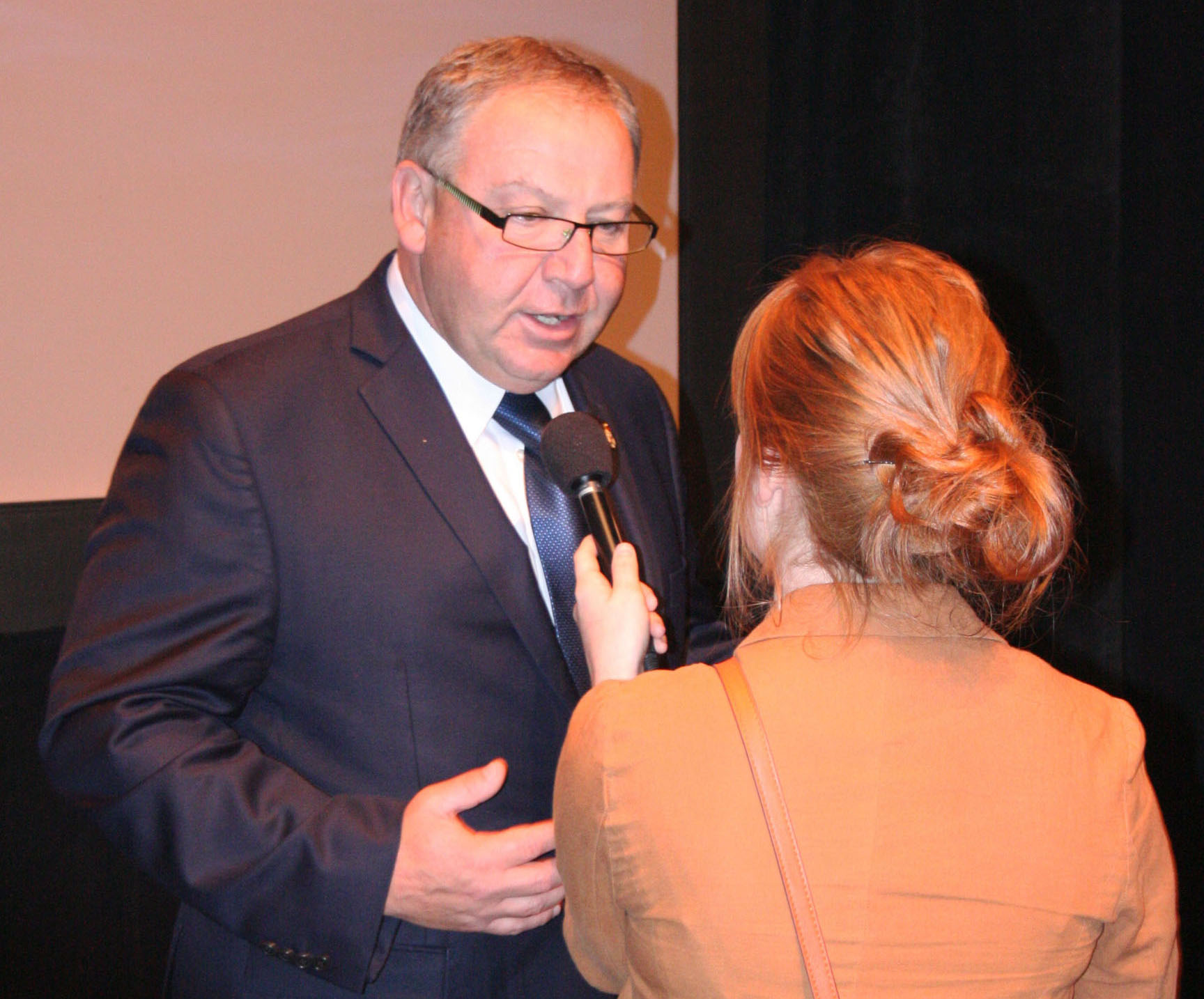
Premier Darrell Dexter maintained that “Halifax is the capital of Atlantic Canada, and I want to keep it that way” and, expressed unbridled optimism, that every convention centre visitor would be “a potential new investor or return visitor”. Although he was doubtless correct in saying that “A vibrant (Halifax) downtown means a better Nova Scotia” his characterization of the two-story underground convention centre as “A new icon for our city” would indicate that he needs some lessons in iconography.
Mayor Peter Kelly talked about “pride in our past, hope for the future. The convention Centre: our next great meeting place.” Master of Ceremonies Irene d’Entremont referred to the project as Kelly’s “legacy”, underscoring the fact that Kelly is soon destined for the political outback, having decided not to contest the 2012 Halifax mayoralty race.
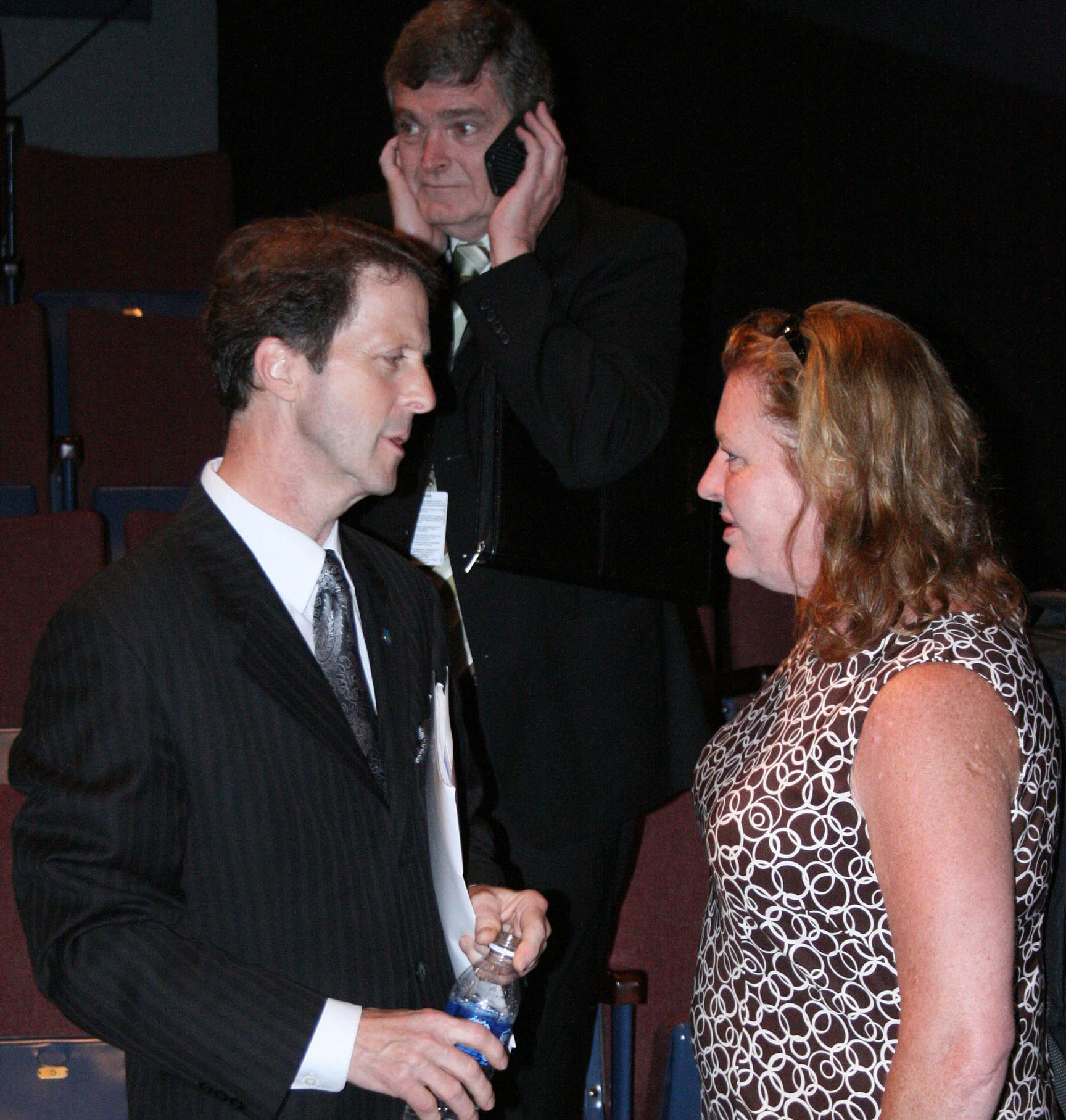
So now that “It’s all over but the crying,” in the words of Hank Williams, what lessons remain? Some modest improvements to the project have been implemented as a result of the process. The earlier convention centre proposal had the three levels of government investing $159 million in a convention centre while receiving zero equity in the project — a very surprising arrangement. Stung by criticism, the deal when originally approved by HRM in December, 2010, was revised to include an opportunity for the city and province to buy out the facility after 25 years at a pro-rated cost, or purchase it outright for $1 after 30 years. Even so, it will be at least 2021 before it is possible (if the development proceeds according to schedule) before it will be possible evaluate the performance of this development — likely long after the suite of politicians responsible for its creation will have strutted and fretted their hour upon the political stage and exited the wings.
There will also be some opportunity to provide input to the design process via a series of ten public “engagement sessions” held in Halifax, Sydney, New Glasgow, Truro, Wolfville, and Lunenburg over the next five months (see BuildYourCenter.ca for details), although it’s a moot point whether these will allow for more than window-dressing the current design.
In my report I also drew particular attention to what I called “the cultural context of success.” The entire conjectural premise of profitability of the convention centre is in the attempt to turn high-spending international delegates into equally high-spending tourists or return visitors. Only this, if it can be realized, can provide the revenue base that could transform the project from an economic sinkhole into an economic geyser. But how to do so? Hotels, restaurants, bars, and “shopping” will not provide a competitive advantage. Every convention centre locale has these in spades, frequently in greater diversity, quantity, and quality than Halifax. What the city does have is a distinctive artistic and historical culture – museums, citadel, tattoo, jazz, film, buskers, fringe, and other festivals, etc. What it lacks is investment to fully realize their potential. Thus, to succeed with the economics of a convention centre one ought to be making concurrent and commensurate investments in the cultural infrastructure of the city. Nonetheless, despite praise for the city’s accommodations and dining, and the affirmation that the new convention centre will be “a great place to do business”, Messers MacKay, Dexter, and Kelly did not so much as breathe the words “art” or “culture” in their remarks — a clear indication of how far off the radar this concept still is.
In my December 2010 report I wrote:
“One could argue that it is a disservice to the public to present a case for a publicly-funded project such as this convention centre project, in such a fragmented, incomplete, and complicated way that there is next to no possibility that an elected decision maker, or journalist — or indeed average citizen — can actually understand it. Bad or good, the shape of public policy ought to at least be clearly and comprehensibly articulated so there exists the possibility of having a factual, rational, and informed discussion about it. To do otherwise is to set the stage for confusion, rumour, incomplete comprehension, misunderstanding, and a general context where any decision with respect to the proposal is based on an incomplete or erroneous understanding of the costs, benefits, and risks associated with it. This isn’t a prescription for good public policy process. My hope is that this report is a step in that direction.”
Unfortunately my hopes in this regard have not been realized. Whether or not the convention centre will turn out to be a stunning success or an albatross which hangs round the neck of the municipality and province for the next quarter of a century, as a public policy initiative it has been a concatenation of confusion, delusion, fabrication, omission, deception, missed opportunities, sleight’s of hand, and willful blindness. It’s not a template for development that anyone ought to aspire to.
Christopher Majka is an ecologist, environmentalist, policy analyst, and writer. He is the director of Natural History Resources and Democracy: Vox Populi.

